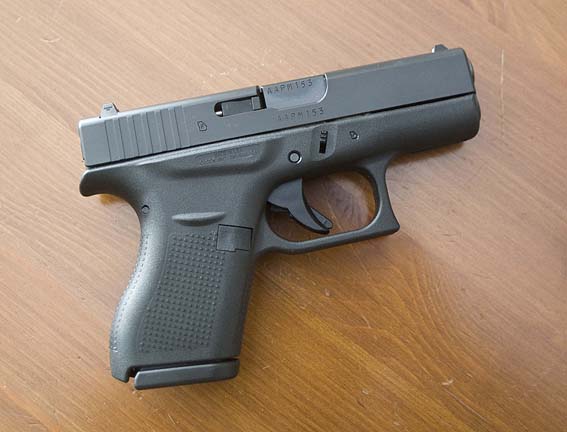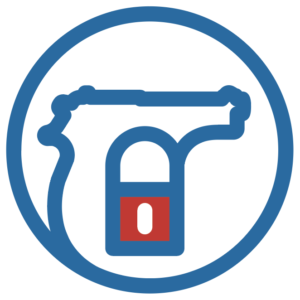 The gun was there because it was a room with young adults, after an evening of drinking, and they did not bring enough education and training before that deadly moment—the one when an accident ended Jon’s life and turned mine into years of recovery from grief and loss.
The gun was there because it was a room with young adults, after an evening of drinking, and they did not bring enough education and training before that deadly moment—the one when an accident ended Jon’s life and turned mine into years of recovery from grief and loss.
It’s not the ownership legality that put that handgun in the room, or countless other rooms where people have died. Not enough of us are thinking of the responsibility that handgun ownership should demand. They are not toys or hobbyist’s power tools. Handguns are weapons designed to kill. There was no effort in North Carolina, where Jon died, to make them safer by instructing those college kids how to live in a world with weapons everywhere.
If the punishment for unsafe gun ownership falls outside of our laws, in only a personal and private judgment, what do we learn about safety? Drunk driving is an offense even without a fatality. Unsafe gun ownership can be a similar matter, if we have the courage and love to make it as important as The Talk. We need The New Talk, about guns.I’m reminded of the Columbine tragedy. How unprepared we were then, and in many ways still are. Over the years I’ve spent countless hours volunteering in my children’s classrooms. I wanted to be involved in their education and their lives. I’ve worn many hats— homeroom mother, overseer of the student store, creating a student directory, and a liaison for children with special needs. I was a member of both the PTA and the Booster Club. Randy sometimes joked about my involvement. Other’s probably saw my s’mothering as helicopter parenting.
I didn’t care. I hovered, protecting all of the children, not just my own.
Then came Jon’s 8th grade year, the same one as Columbine. Panic was everywhere. Schools were scrabbling to find ways to make families feel more secure, safer. While I lived in Austin I received a phone call from a parent at Westlake High School. Jon was going there next year. She knew about my other school involvement, and also knew I was about have a high-schooler. She asked if I’d be interested in participating on an advisory council for safety and health.
The first meeting was held in the auditorium. I entered the room late, looking across the sea of chairs and around a space that hosted the school plays, searching for a familiar face, but I the seminar was already underway.
I slide into an aisle seat staring at a spreadsheet beaming from a projector. Parents had already put together a list of potential dangers with possible solutions. There was talk about extra lighting, surveillance cameras, monitored doors, and the current procedure for visitors.
I was impressed, as it seemed these parents knew their hardware. Before the second spreadsheet was put up, the room became brighter and the speaker asked for comments. Many parents spoke up, but I just listened. I was being hard-wired about the system that could protect our kids.
Then came the second list. I called this the software. It was directed at us—parents, students and educators. She explained that securing the building was the first step, but becoming a proactive community was needed too. “We need to train and educate,” the committee leader said, “so accidents like Columbine can be reduced. I need your help to get the message out.” Of course, Columbine was not an accident. It was an attack unleashed by desperate and disturbed kids. Kids who had handguns available.
What was missing in Columbine was the safety training. Not for the gun owners. To provide safety for teachers and children, the kids who were around guns. I didn’t know that day in that auditorium that Columbine was an early sign of the gun culture that formed around our country and among our kids.
That day in that school meeting sent a message I’ve heard many times by now— there will always be bad people and we will never be completely safe. But learning to create a climate of trust, a plan of action, and by educating our children, we might save lives. They’d be safe from a direct attack.
I moved to North Carolina before I could see all the changes implemented at Westlake. But I took those lessons about hardware with me. I enrolled my boys in a very small private Christian school. I thought I had done everything I could do to protect my children.
I really believed I taught them well, right up to the night of Jon’s death. After that crippling grief and my loss, I don’t want what happened to my family to happen to others. I made a huge mistake. I never thought to engage my children in a conversation about handguns or the negligence of others. Where does the responsibility fall? At our own kitchen tables, but also in schools, and maybe even churches. The places we gather in to learn and grow.
We have learned to call this kind of conversation with our teens The Talk. We talk to them about things as important as unprotected sex, drug use, drinking and driving. But unlike a drunk driver, a gun owner is not liable for their machinery. We’re not talking about gun safety. Not yet.
I don’t want other families to endure what happened to mine. I realize I made a terrible mistake. I never thought to have the new version of The Talk, this one about handguns with my sons. If you’re partying, be careful when you see a gun in the room. Ask if it’s loaded. Don’t pick it up without checking it, but better yet, don’t pick it up at all. Leave if you can’t be sure the room with that gun is a safe one. We teach them they don’t get into a car when the driver has been drinking.
But now that I’m writing this, I see the ever-growing gun culture as one reason for my oversight. I wasn’t prepared to visualize my son enjoying a night out and ending up in a room with unsecured, loaded guns. That’s not illegal, but the lack of responsibility is a part of gun ownership in North Carolina, Texas, and nearly everywhere else in the US. Ownership of a handgun demands a background check. I know this firsthand because my son Lance is a handgun owner, a reality I couldn’t imagine I’d have to live with after Jon’s death.
I understand his right and everybody else’s to own a gun in America. I don’t understand why our schools and our churches and our communities don’t require us to teach and learn gun safety. It’s as if handguns are being sold everywhere without safeties. The mechanism can be locked. But the behavior of irresponsible and negligent ownership—well, there’s nothing you can build into a gun to make it safer. If it were, I might still have my son’s arms around me on those Mother’s Days, the birthdays, all of the Firsts I learned to endure.
So our ownership doesn’t eliminate risky behaviors with handguns, even though they’re deadly weapons. We have hundreds of pages of safety rules for stepladders, I learned. Nobody teaches a stepladder safety class in colleges as part of orientation. The schools don’t teach anything about handguns, either. Nobody has to tell me which of those things are more deadly — or can kill someone with intent, or by accident.
Putting a young adult into a college community on their own for the first time, permitted to own and show off a handgun, or even carry one on campus? That’s something we can all work to change. Not to prohibit ownership, not ever. But to demand the responsibility, because everyone from the North Carolina coroner to those tennis friends of mine has a question about who was responsible for Jon’s death. The state thought he was responsible, calling it a suicide. Others like my tennis friends ask why that gun was in the room loaded. What they mean to ask is why it was loaded—and no one took responsibility for that weapon? Some might call that negligence, on the part of parents of those young adults or the kids themselves.
I still ask myself, during those nights and mornings when I miss Jon, where does the responsibility fall? We’ve taken a stand on drinking and driving. But unlike a drunk driver, a gun owner is not liable for their machinery. There are no criminal punishments handed out when someone is negligent with a gun. Jon was guilty of holding a gun. He knew the difference between right and wrong, and he knew that holding any gun, loaded or not, towards your head is profoundly wrong. But we cannot dedicate ourselves to preventing gun accidents if we do not take into account the responsibility of the owner.
Owners must have a role they must play in exchange for their ownership rights. In the interest of public health, unsafe ownership can be treated like a DUI, until there’s a fatality. I am not advocating jail for every offense. There are laws in some states that do make gun owners responsible when a child dies. But they apply to children under the age of 14, and in most cases the gun belongs to their parent. Most prosecutors will not punish those adults, knowing that as parents they have already suffered enough. And they have. I know.
But if the punishment falls outside of our laws, in only a personal and private judgment, what do we learn about safety? Drunk driving is an offense even without a fatality. Unsafe gun ownership can be a similar matter, if we have the courage and love to make it as important as The Talk.
I want to live in a world of that love, where we can begin to make our communities safer in this era of the private handgun. It seems like the schools, where we teach our kids about drugs, risky sex, and drinking, is the first place to start. It feels like our churches, where we gather for learning and to find our faith, is a good place, too. We can demand that, and I wish we would. The best place to have a new version of The Talk, though, is at our own homes, or while we ride with our kids in cars and have their attention, once we quiet the cell phones.
We don’t have to write a new set of lessons about this. Our media and our teachers and even our bloggers are already writing about how to do this. In the last few weeks while I tried to find a moral to my painful lesson, I came upon a story in Cosmopolitan about guns and dating. Cosmo might be one of the last places you’d think to look for safety advice. But there it was, a story about a set of questions to ask a date about their gun relationship.
Do you have a gun? How did you get it? Why did you get that gun? Where do you keep it? I could add a question about how do you store it, or the one about is that gun loaded. Jon could have asked those questions that night that I lost him. My hope is that those of us who survive him will ask such questions in his memory. We should be talking about this, so we can agree on how to act responsibly. So every young adult, living in a world of guns, learns safety. Even for me, I needed to learn my lesson better after Jon died.




Thank you for writing these words Leesa. I miss seeing you and think of you a lot and your loss. Take care and hope to see you soon! Love Kelly
Thanks Kelly. We sure miss you on the tennis courts. At least I get updates from Denise. And heard you met my girlfriend Vala. Ditto, see you soon💜
Leesa, I’m so sorry for the loss and the pain you and your family have ensured. Your story sounds so familiar. It seems that we can’t do enough to protect our children from bad things. I agree that we need to continue to Talk to them, even if they don’t want to listen. My son has told me so many times that I’ve last count, “Mom, I know. Do you think I’m stupid?” They want to be independent, but they need that continued reinforcement/reminder even if they don’t want to admit it. I pray for your strength and healing.
Thanks Charlotte, so glad you found me on FB. Enjoy seeing your pics. You haven’t aged a bit! Hugs to you and your family
Hi Leesa, I shared this with Mark and our girls. Lydia loves to hunt and has several guns. I also shared it with my siblings. My sister Beverly, was “wowed” in reading this. She teaches high school kids and plans to use this in her classroom this fall. You are a jewel and I miss you, but always look forward to seeing you when it works out!! Love and hugs to you and your precious family!! Let me know the next time you are down here…
Thank you for sharing my post with your family. It means a lot. Kisses back to you all! Hopefully we will see each other soon.
Certainly is an excellent idea to be taught in school. Send a copy of your book to your congressman.
So sad to read this……so much heartbreak…….now so many memories. I know your mother and was a neighbor on Dawson Ave in Mansfield Ohio. I met you when you were about 2 years old, but you would not remember. You have a lot of strength and courage to try to help others……💔💔
Dana, thanks for the kind words. I have been in the process of moving and was not able to my check site. Mom is my champion and has been one of my biggest supporters. I credit my strength to her. Thanks again
Your mother inspires me too…..she is a sweetheart 💖💖
Many years ago my father committed suicide…..an awful thing too…..I have had a time with my mind on that. We all hurt for different reasons………
You will get strength helping people…….many hugs to you !!